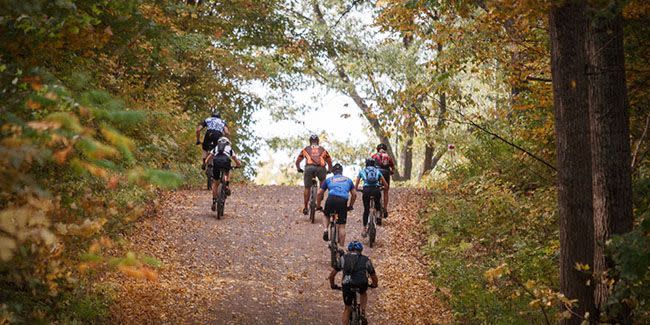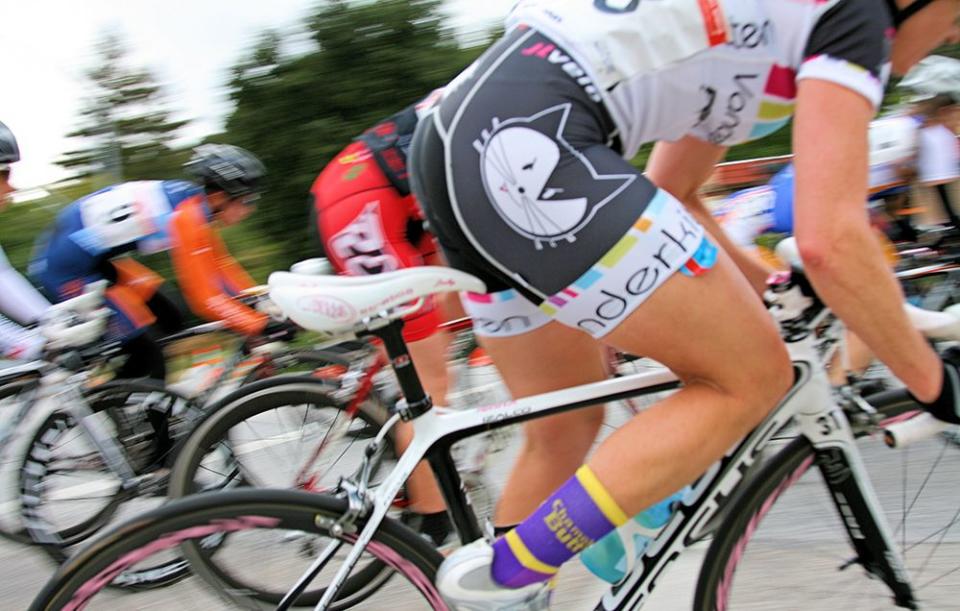Dealing With an Itchy Butt After a Ride

It’s summer, and with the heat hammering down, you might be noticing that your skin is a bit more irritated than it was when you were bundled up and riding in the winter months. Having a little itch down there every once in a while isn’t anything to worry about—it’s likely just irritation caused by heat and some minor chafing—but if your cycling kit causes a constant—ahem—pain in the rear, you might want to take note. The heat and sweat might be inflaming the itching but, according to Collingwood, Ontario-based naturopath Lia Sonnenburg, you might have a bigger problem.
If It’s an Occasional Occurrence
If you’re only itching after the occasional weekend ride, it's likely you're just not cleaning up and cooling down properly, Sonnenburg says. “Keep everything clean,” she explains. “That’s my first advice.”
RELATED: How to Wash Your Cycling Kit
Part of the reason you’re feeling itchy may be due to hygiene, but it’s also likely due to "the compression in the area and humidity, which make everything so much worse, especially with friction and a decreased blood flow since you’re sitting,” she says.
The Hard Truth: You Could Be Wearing Your Chamois Too Long
To remain vigilant with your skin care after a ride, when you’re done pedaling, remember to drop your shorts. "You need to take your shorts off right after a spin,” she says. "That area has a lot of nooks and crannies!” It seems simple enough, but you might find it harder to put into practice. It’s so easy to take those extra few minutes after spin class to chat with friends, or drive home from that mountain bike ride in your chamois, or clean your bike up, or check your email, or start making a snack after a road ride, etc. But that simple change of wardrobe can help cut down drastically on irritation and skin issues.
After you’ve done that, think “clean and cool.” “Cleaning the area and cooling it down could go a long way to avoiding itching,” Sonnenburg says. That means making sure you rinse the chamois area well after a ride, getting into all of those "nooks and crannies.” A hot shower often sounds great, but make sure you keep the water cool towards the end so you’re not still sweating when you get out.
Treatment: Using witch hazel
“If you've got extreme itching, take a maxi pad and soak it in water with a bit of witch hazel, which acts as an astringent, pulling the tissue tight and decreasing inflammation,” Sonnenburg suggests, “Put it in the freezer and then stick it in your pants post-ride to cool off a bit more.” This tip may not work as well for the men, but guys can still benefit from a damp washcloth with a bit of witch hazel that’s been chilled in the freezer.
RELATED: 8 Things Your Sweat is Trying to Tell You
And lastly, Sonnenburg notes, don’t put on your clothes until you’re completely dry and cooled down. If you’re still sweating from your ride, you’re just irritating your skin even more.

If It’s a Constant Issue
If it’s becoming a constant problem and you’re itching long after you ride, it’s time to think about the bigger picture.
“People come in thinking they have something like pinworm because they’re having itchiness all the time, but it might be related to looser bowel movements,” Sonnenburg says. "If you have that, sometimes it’s hard to keep everything clean enough. The stool is actually quite irritating. But if you start using wipes after bowel movements and before and after spin class, that helps.”
The Hard Truth: It could be a fungus
Additionally, it could be a fungal infection. "When you’re sweaty in that area, you’re more susceptible to fungal overgrowths, which can easily be treated topically. And the Standard American Diet—SAD—promotes the growth of some of these fungal issues, and the heat and moisture from a spin class add to that,” she adds.
To have better bowel movements and to keep fungus from setting up a breeding ground, she suggests making subtle changes to your diet. "Eating low glycemic can help,” she explains. “That’s hard for endurance athletes, since they need more to burn. But we never want people going home and eating a lot of breads and pasta—we want more of a vegetable-based diet with some good meat here and there, and avoiding sugars, big time.” She also adds that taking a probiotic regularly can help with dietary problems.
RELATED: Four Steps Needed To Say Goodbye to Sugar
Solution: Visit your doctor
If it’s an unrelenting issue, it may be time to seek professional help, either from your regular doctor or from a more holistic source like a naturopath: if it’s infringing on your everyday life, it needs to be addressed. But beware of a doctor who immediately prescribes a bunch of ointments: “Starting with topical steroid creams, a low dose like hydrocortisone isn’t too high risk,” Sonnenburg says. “But if it’s used frequently, it can thin the skin, which then can make the itching worse. The amount of compression on the area and the humidity is what’s likely causing the itching, and with thinner skin, the compression will get worse. It stops the immune system as well, so any repair that’s coming into the area is going to be thwarted. It’s low risk at first but over time, not great.”
And with fungal infections that get to the point where medical help is necessary, a topical cream may stop the current problem, but Sonnenburg cautions that it’s better to take a step back and try to figure out if there’s a larger problem or deeper issue that should be resolved in addition to clearing up the current infection. This typically means looking into diet and digestion, and it’s never a bad idea for a cyclist to take a step back and think about what he or she is eating.
For the ladies, it may help to keep track of how the itching is timed around your monthly cycle, since there may be a connection. “The ebb and flow of female hormones can have an impact,” Sonnenburg explains. “Progesterone levels rise—in a normal, healthy woman who isn’t on birth control—and they peak near the end of menstruation. That will peak sugar, which can feed fungals and some bacterias. So there’s a higher risk for things like urinary tract infection or yeast infection. So pay attention to your cycle.”
You Might Also Like

